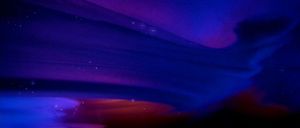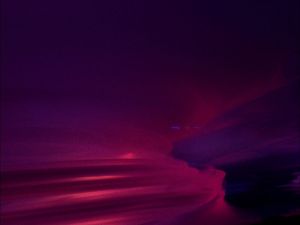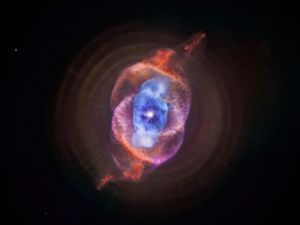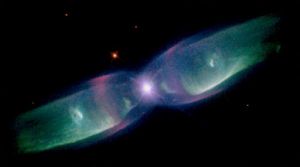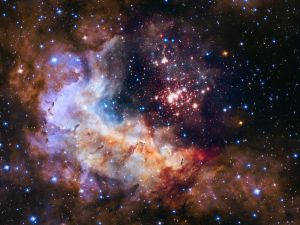Nebula
Jump to navigation
Jump to search
A nebula is an interstellar cloud of matter, usually gases (such as hydrogen) and dust. Many nebulae are stellar nurseries.
Nebulae (this spelling being the plural) were sometimes known as "interstellar dust clouds."
Since sensors and other systems function poorly in some nebulae, they have been known to be used by starships to strategic advantage in conflicts.
Nebula Classifications
- Class 1 - contains any amounts of protomatter
- Class 2 - the matter within is disruptive to the sensor arrays of Federation starships
- Class 3 - has a subspace vacuole near the center, which acts as a gravitational anchor for the surrounding gas
- Class 9 - has constituent compounds and elements that have sensor-deceiving properties
- Class 11 - consists mostly of oxygen and argon, with trace amounts of theta-xenon, fluorine, and sirillium
- Class 17 - contain hydrogen and helium, and can be similar to Class 11 with parts of sirillium
- Class J - have deuterium (heavy hydrogen), and certain ionized gases that have potential to contain a warp core explosion
- Class K - documented to contain helium and argon
- Class T - roughly one-thousand kilometers in diameter, composed of hydrogen, helium, and argon; can contain planetoids (a type of stellar nursery)
- Mutara class - term coined in order to classify nebulae similar to the Mutara Nebula
Nebula Types
- Dark matter nebula - A gaseous accumulation of material in space, caused by uncharacteristically high concentrations of dark matter.
They could be extremely difficult to detect using conventional sensor technology. Can be illuminated using metreon particles or modified photon torpedoes
- Dichromic nebula - Have intense gravimetric distortions. Dichromic acid (H2Cr2O7) is the fully-protonated form of the dichromate ion,
and both are powerful oxidizing agents. Dichromic acid leaves trace amounts of ions that can interfere with instruments used to observe and measure local magnetic fields.
- Emission nebula - These nebula emit their own light, due to the presence of ultraviolet radiation from very hot, young stars inside.
Cloaking devices were useless inside emission nebulae.
- Hydrogen cloud - Composed entirely or mostly of hydrogen molecules, the dominant hydrogen is mostly neutral, rather than ionized or molecular.
- Inversion nebula - Made up of unstable plasma strands, Federation astro-theorists theorized that these nebulae were so unstable,
they would burn out within a few years, but the phenomenon had never been actually seen in the Alpha Quadrant.
- Planetary nebula - Created by expelled matter of a star reaching the end of its life, also considered an emission nebula.
- Proto-nebula - Newly-forming interstellar dust clouds, these nebulae sometimes had intense gravimetric forces, and could give off plasma surges.
- Protostellar nebula - Contain high levels of particle flux, which prevent starships from staying inside for more than 72 hours
(though could also hide them from sensor scans). These are sometimes also called Proto-planetary nebulae.
- Stellar nursery - Where multiple stars are formed, perhaps not all at once, but during the same time period.
Intense ultraviolet light was often given off by the forming stars.
